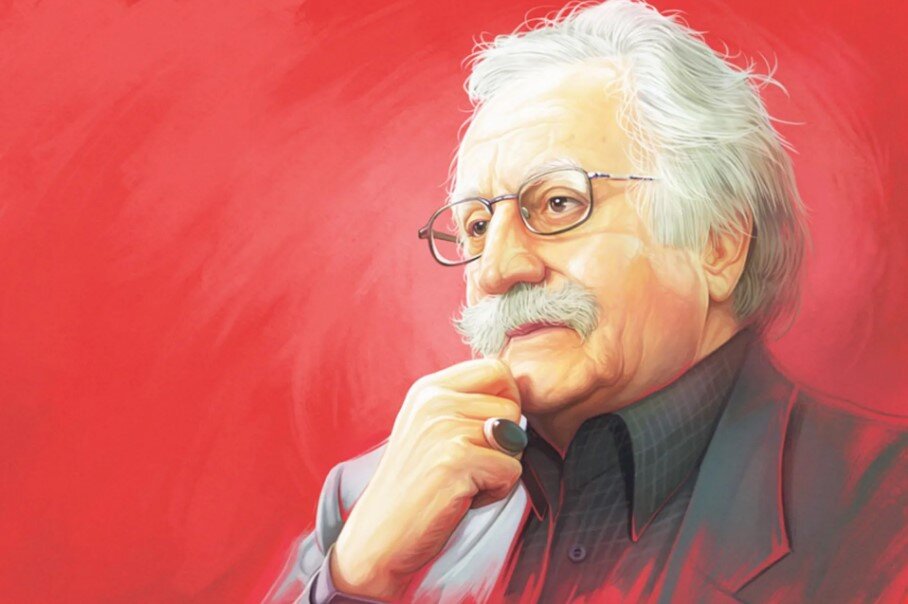Celebrated Iranian master Mahmoud Farshchian passes away

TEHRAN- Mahmoud Farshchian, the renowned Iranian miniaturist and painter, passed away on Saturday in a hospital in New Jersey, the U.S. at the age of 96, Persian media reported.
Farshchian left this world, leaving behind a rich legacy that has shaped Iran’s cultural and artistic landscape.
Born in 1930, in Isfahan, he was celebrated as one of the most prominent figures in contemporary Iranian art, known for his exquisite works inspired by Persian literature and religious texts.
Farshchian’s journey into the world of art was marked from a young age by exceptional talent and unwavering devotion. His father, a prominent figure in Isfahan’s carpet industry, recognized his son’s extraordinary gift and took him to the workshop of Mirza Aqa Emami, where the young artist’s potential was first discovered. From that moment, a lifelong pursuit of excellence and spiritual expression through art began.
After training under prominent masters and graduating from the School of Fine Arts in Isfahan, Farshchian traveled to Europe to further study Western art in museums. He was known for immersing himself in art collections with a passion, often carrying a bag full of books and tools, and staying until closing time.
Upon returning to Iran, Farshchian began working at the Tehran Fine Arts Department and later served as the director and professor at the Faculty of Fine Arts at the University of Tehran. He resided in New Jersey, but maintained regular visits to Iran, continuing his artistic pursuits.
Farshchian’s work is renowned for its intricate craftsmanship, blending traditional Persian miniature techniques with innovative elements that breathe new life into classical themes. His art vividly captures the soul of Persian poetry, religious stories, and spiritual symbolism, creating compositions that are both visually stunning and deeply meaningful. His mastery lies in the delicate balance of tradition and innovation—crafting vibrant, flowing lines, circular motifs, and dynamic colors that evoke emotion and transcend cultural boundaries.
Throughout his illustrious career, Farshchian’s artworks have traveled the globe, exhibited in prestigious cities such as Paris, New York, Chicago, and Tokyo. Many of his pieces have been gifted by Iranian officials as symbols of Iran’s rich cultural heritage. His contributions earned him numerous accolades, reaffirming his status as a national treasure.
Farshchian also created some of the most moving visual interpretations of the Ashura tragedy in contemporary art. His works, such as “The Evening of Ashura” and “The Standard-Bearer of Truth,” transcend mere illustration, capturing the spiritual sorrow, sacrifice, and steadfastness of Imam Hussein (AS) and his companions.
With intricate details, dynamic compositions, and a masterful use of color and symbolism, Farshchian transforms the canvas into a sacred space where grief and hope intertwine. These paintings not only preserve the historical memory of Karbala but also evoke timeless lessons of faith, justice, and resistance against oppression.
Farshchian’s influence extended beyond his brush. He served as a professor and director at Iran’s University of Tehran’s Faculty of Fine Arts, shaping generations of artists who continue to carry forward his artistic vision. His works are housed in the Mahmoud Farshchian Museum at Sadabad Palace, inaugurated in 2001, which showcases over 50 of his masterpieces—testaments to a lifetime dedicated to the pursuit of beauty and spirituality.
In 1955, he married Niyadokht Qavami, with whom he had three children: Ali Morad, a physician; Leila, a psychologist; and Fatemeh.
Despite his international recognition, Farshchian remained rooted in his Iranian identity. His art drew inspiration from Persian poetry, the Quran, and sacred texts of Christianity and Judaism, creating a universal language of spiritual artistry. His ability to fuse tradition with modernity has earned him worldwide admiration, with scholars like Umberto Baldini, Italian art historian, describing him as a “phenomenon and a pivotal point in Iranian art.”
He significantly contributed to promoting Iranian art internationally, often invited to speak at universities and cultural institutions worldwide. Several books and scholarly articles have been published about his works, cementing his legacy as a master artist.
His name has been registered on Britain’s list of 2000 Outstanding Intellectuals of the 21st century, and collectors feel it a great honor to possess one of his creations.
Farshchian was among the 40 Iranian artists honored by the National Library and Archives of Iran for their outstanding works created about the tragedy of Ashura over the past century.
The news of his passing has cast a shadow of sorrow over Iran’s cultural community. Many have expressed their grief, emphasizing that the loss of such a luminous figure leaves an irreplaceable void. The Ministry of Culture and Islamic Guidance, along with numerous cultural institutions, have paid tribute to his monumental contributions, calling him a symbol of Iranian resilience, spirituality, and artistic brilliance.
As Iran bids farewell to one of its most cherished artists, the legacy of Mahmoud Farshchian continues to inspire. His art—rich with symbolism, spirituality, and timeless beauty—remains a beacon of Iran’s cultural identity, illuminating the path for future generations.
SAB/
Leave a Comment